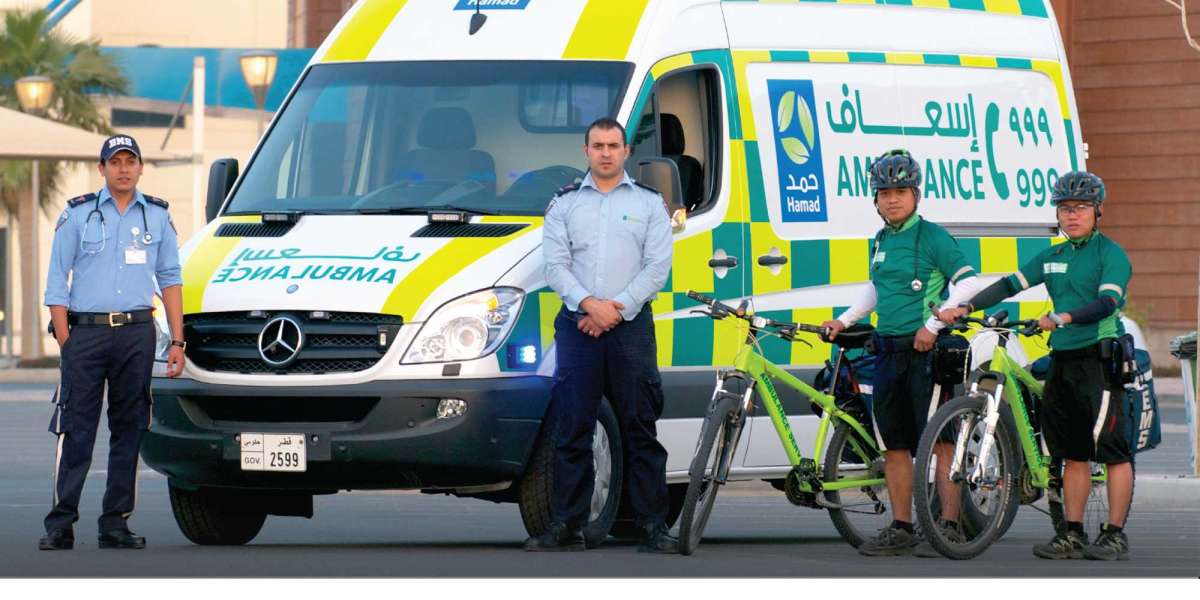In the realm of healthcare, every moment is critical, and timely access to medical care can be a matter of life and death. Medical ambulance services stand as frontline responders, providing swift and specialized transportation for individuals facing medical emergencies. This article explores the indispensable role of medical ambulance services, their significance in healthcare delivery, and the critical services they offer during times of crisis.
In the realm of healthcare, patient transport services stand as silent guardians, ensuring that individuals receive the care they need, not just within the confines of medical facilities, but also during the journey to and from these centers.
Immediate Response to Emergencies:
Emergency Medical Services (EMS):
Medical ambulance services form the backbone of Emergency Medical Services (EMS), responding promptly to emergencies ranging from accidents and cardiac incidents to childbirth and severe illnesses.
Private ambulance services have emerged as invaluable contributors to emergency healthcare, offering a rapid response, specialized care, and reliable transportation.
Life-Saving Interventions:
Equipped with advanced life-support equipment, ambulances serve as mobile medical units capable of administering life-saving interventions, such as CPR, defibrillation, and emergency medications.
Trauma Care and Stabilization:
Ambulance crews are trained to provide trauma care and stabilize patients en route to medical facilities, ensuring that critical interventions begin at the scene and continue during transportation.
Specialized Medical Transportation:
Critical Care Transport:
Some medical ambulance services offer critical care transport, providing specialized vehicles and trained medical teams for transporting critically ill patients who require continuous monitoring and advanced medical support.
Neonatal Ambulance Services:
Specialized neonatal ambulances are equipped to transport premature infants and newborns requiring intensive care, maintaining a controlled environment essential for their delicate health.

Bariatric Ambulances:
Bariatric ambulance services are tailored to meet the needs of individuals with obesity, featuring specialized equipment and vehicles designed to ensure safe and comfortable transportation.
Integration with Healthcare Systems:
Coordination with Hospitals:
Ambulance services are integrated into healthcare systems, coordinating with hospitals to streamline patient care. This collaboration ensures that patients receive the appropriate level of care upon arrival at medical facilities.
Telemedicine and Remote Consultations:
Advances in technology allow ambulance crews to connect with healthcare professionals in real-time, facilitating telemedicine consultations and enabling medical decisions to be made before reaching the hospital.
Community Outreach and Education:
Community Training Programs:
Ambulance services often engage in community outreach, providing training programs in basic life support (BLS) and first aid. These initiatives empower individuals to respond effectively to medical emergencies before professional help arrives.
Public Health Initiatives:
Ambulance services contribute to public health initiatives, participating in community health events, and raising awareness about emergency preparedness, injury prevention, and the importance of early medical intervention.
Challenges and Future Trends:
Challenges in Urban Settings:
Urban areas pose challenges such as traffic congestion, which can impact response times. Ambulance services continually adapt and employ strategies to navigate these challenges effectively.
Integration of Technology:
The integration of technology, including GPS tracking, telemedicine, and data analytics, enhances the efficiency of ambulance services. This trend is expected to grow, further improving response times and patient outcomes.
Conclusion:
Medical ambulance services are the lifeline of emergency healthcare, providing a crucial bridge between the onset of a medical crisis and professional medical care. As the healthcare landscape evolves, these services will continue to play an integral role in saving lives, fostering community health, and contributing to the overall well-being of society. The tireless efforts of ambulance crews underscore the commitment to ensuring that every individual, regardless of the nature of their medical emergency, receives timely and expert care during their journey to recovery.








